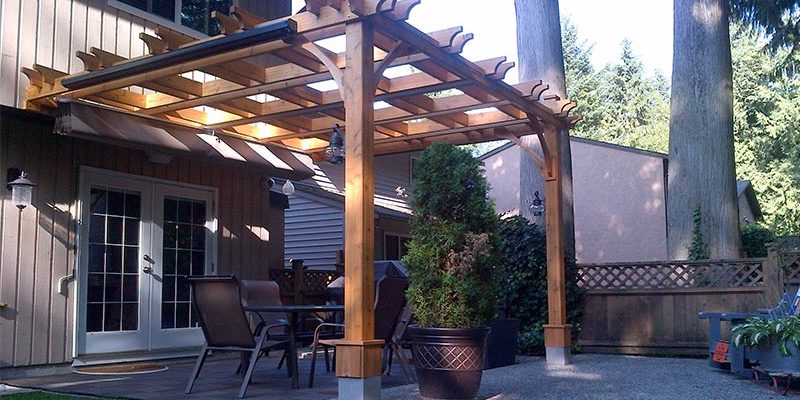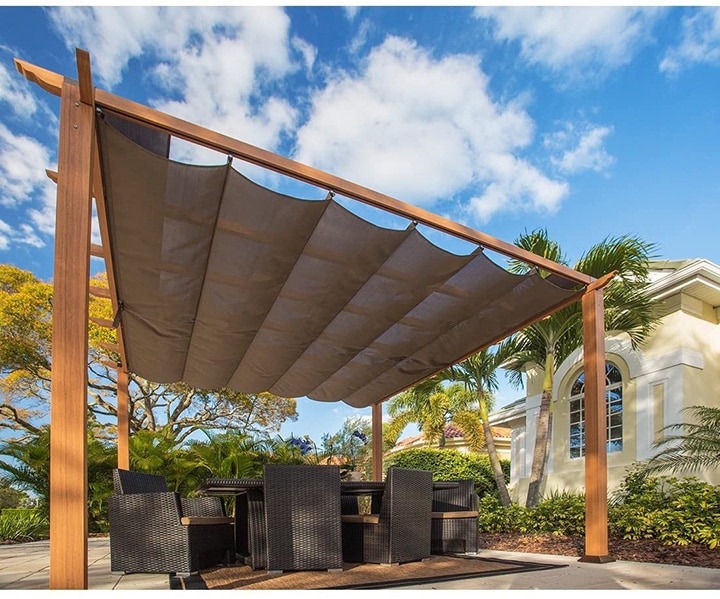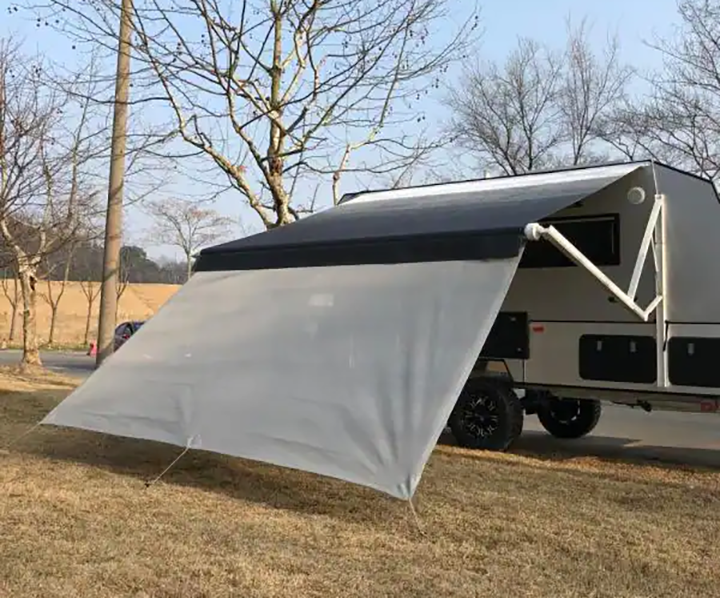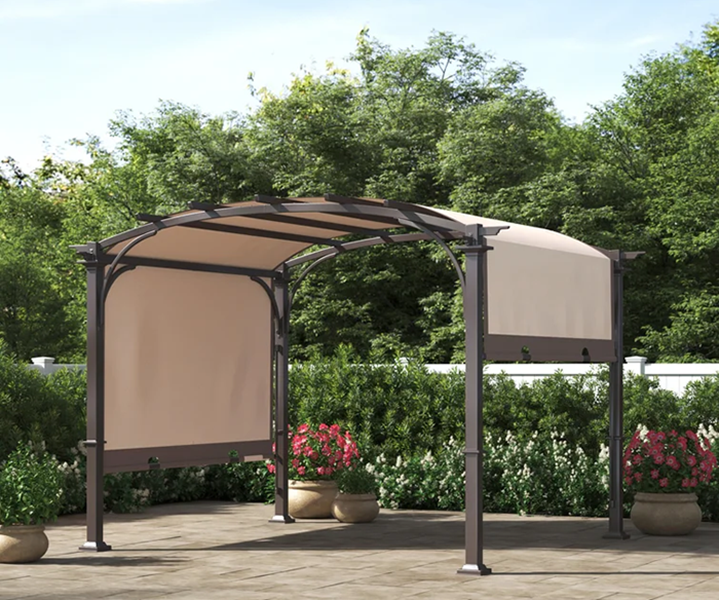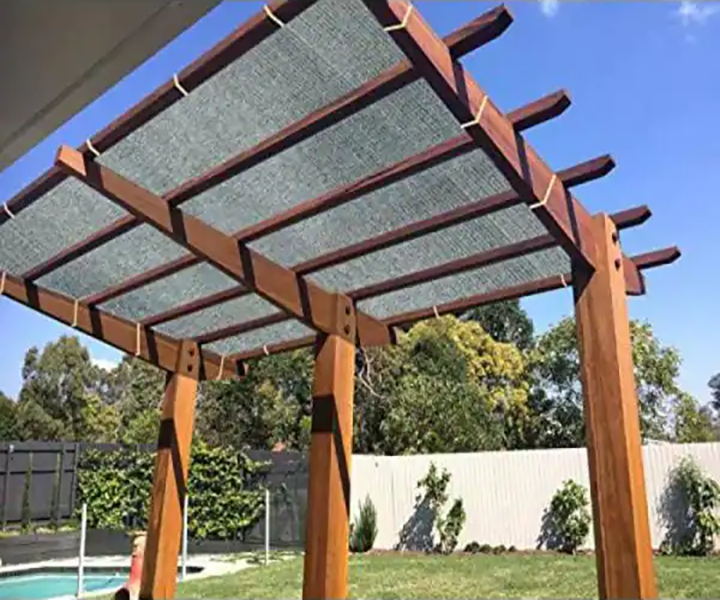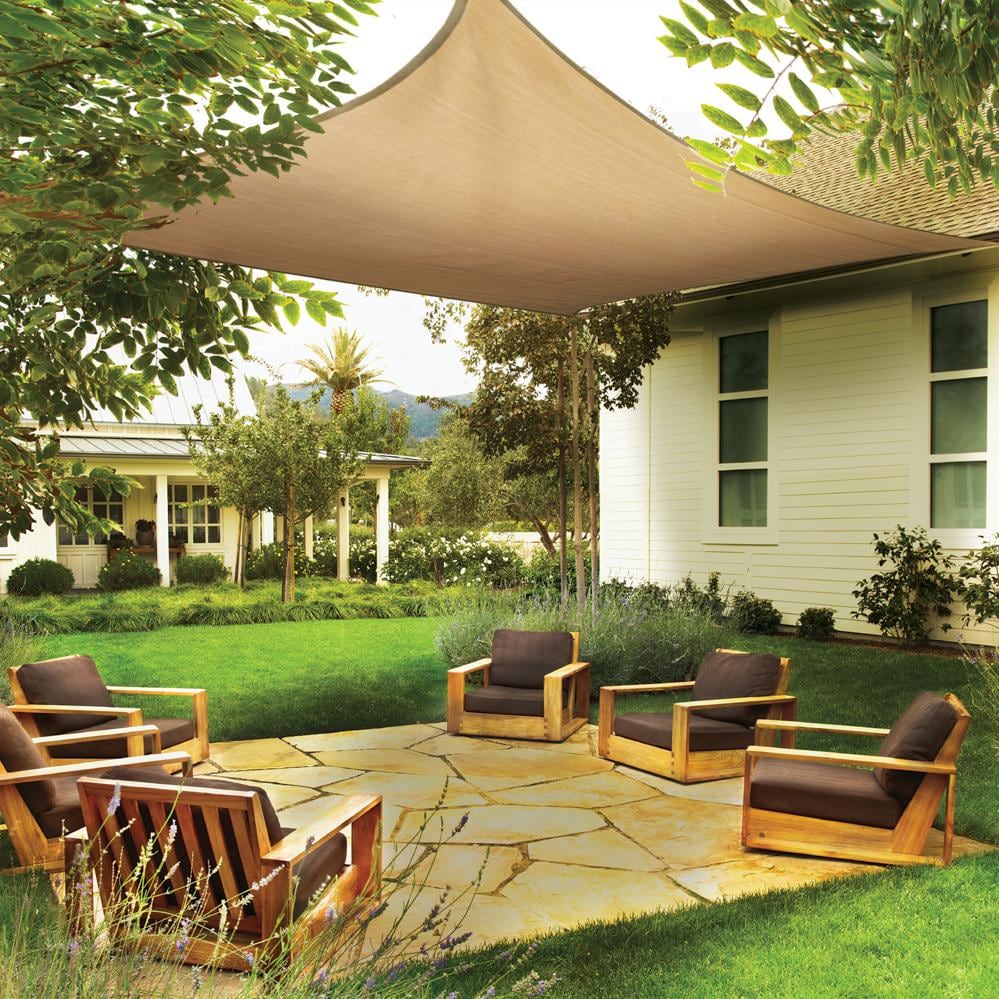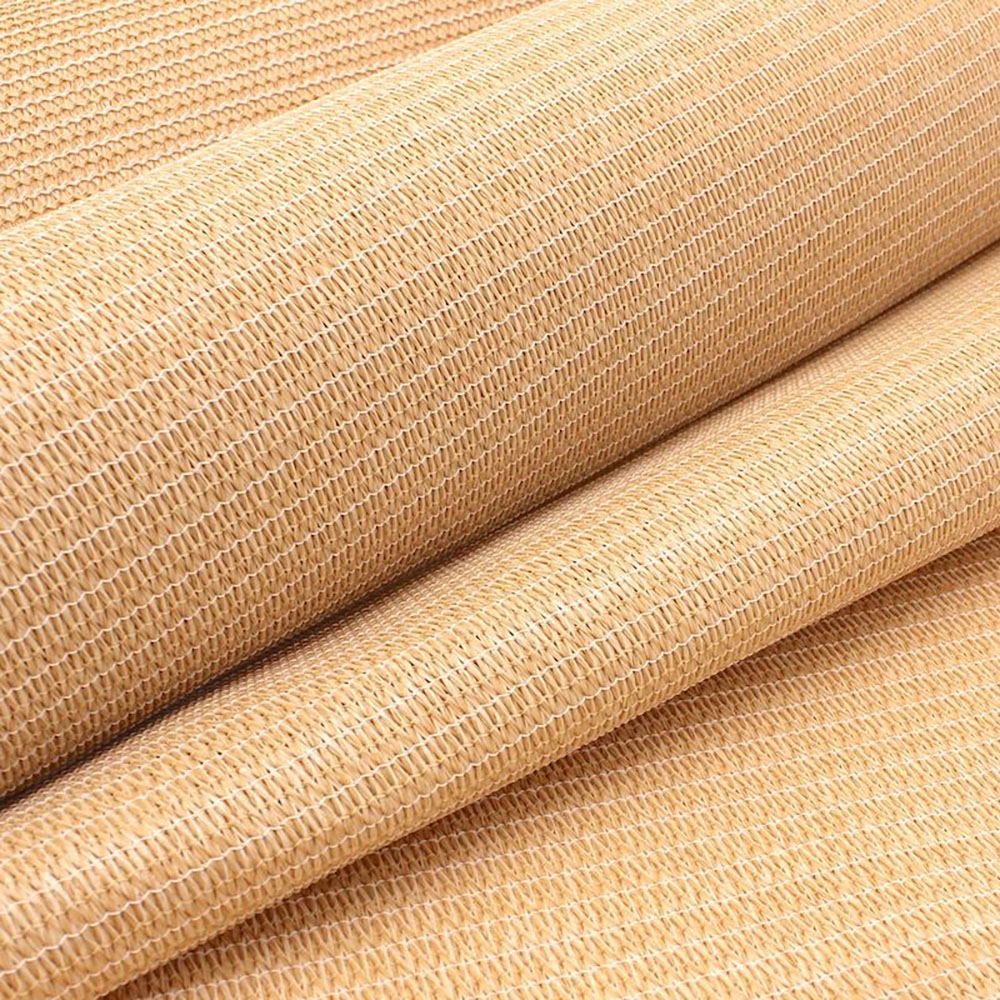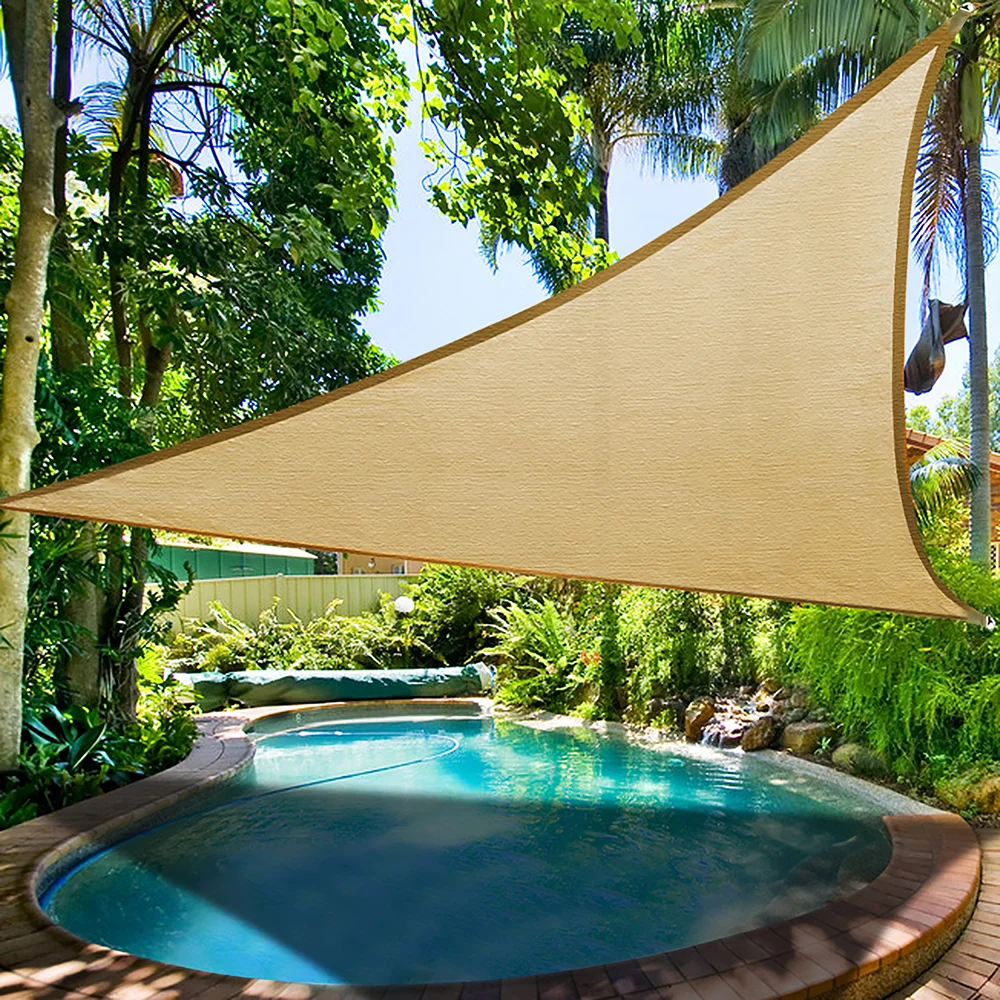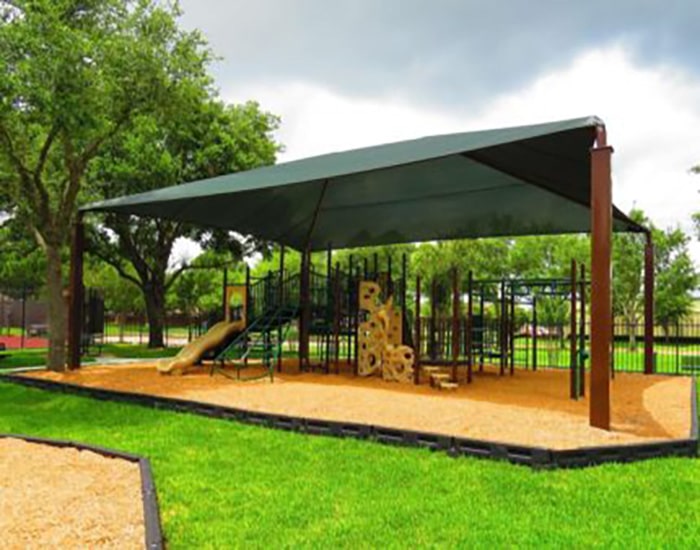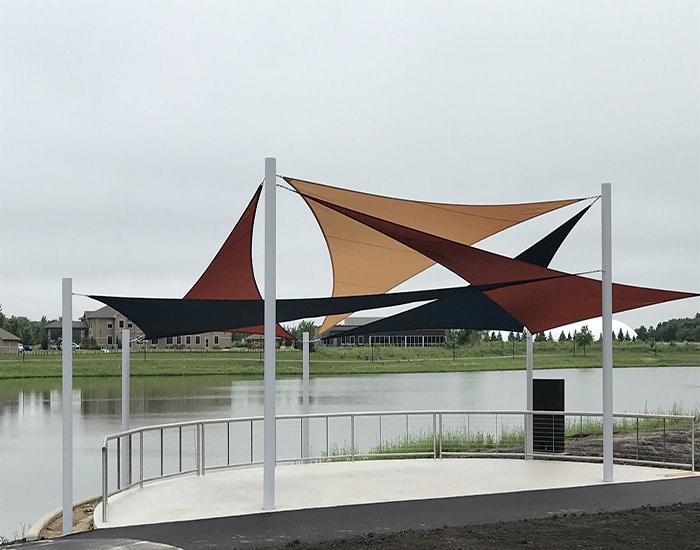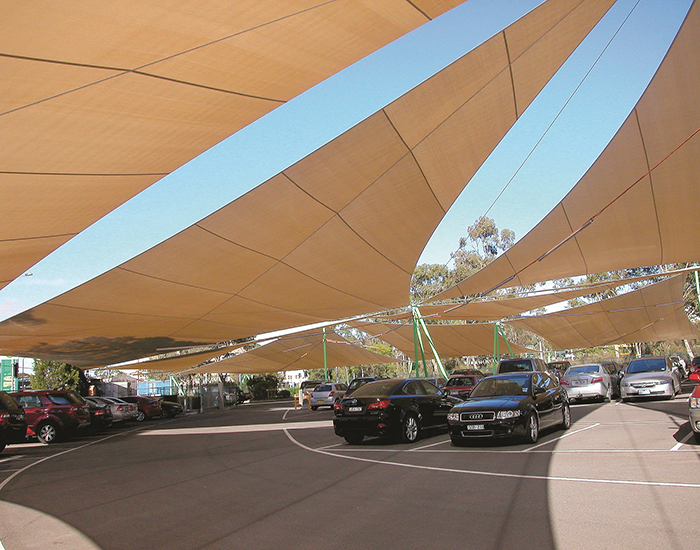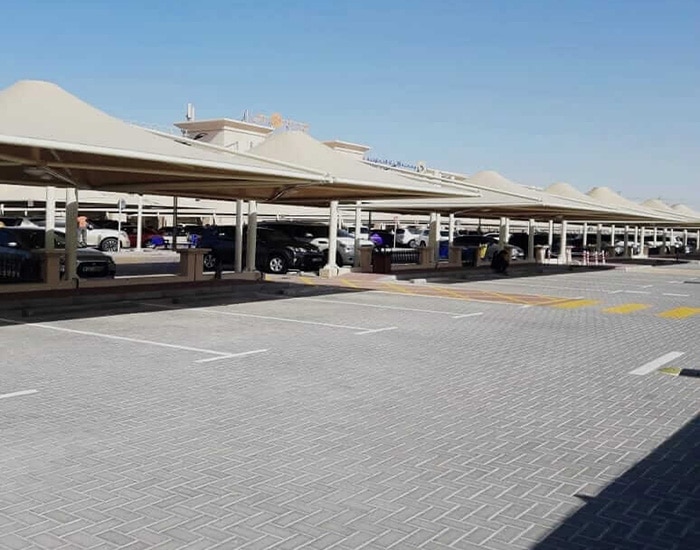Sun shade fabrics may do more than just bring personality to a room or an outdoor scene. They provide an extra layer of weather protection by blocking the sun, pests, and insects. You’ll undoubtedly wish you had an appropriate source of shade when the sun is blazing down on you on your patio or shining through the windows of your boat, RV, or home.
What is Sun shade Sail?
Sun shade sails block UV rays, allowing an outdoor space to be 10-20 degrees cooler. The fabric of the shade sail is porous, allowing hot air to rise through it.
A sun shade sail can be used instead of a sun shade sail, which we maintain on our patio. It looks great on pools, play areas (like sandboxes or swimming pools shade), decks, and even pergolas. They can also be used as a car cover or a vertical privacy shade in the middle of the yard.
Sun shade sails were extensively employed professionally and commercially in various public outdoor spaces to beautify shade, such as outdoor seats at restaurants or picnic areas at splash parks, before becoming popular.
What is sun shade fabrics?
Sun shade fabrics under the blazing summer sun create a cool shaded zone: summer UV and heat protection for your family and pets. Sun-shading fabric is a unique fabric whose primary function is to prevent and block the sun’s glare, and its applications are numerous.
Today’s market offers a wide range of product designs that shield your home from UV radiation, solar damage, and ambient heat. When it comes to finding the ideal sunshade for your property, you have many options.
Which types of fabric are used as sun shade?
1. Woven Fabrics
Woven solar shade cloth comes in various colors and styles to complement the look of your home. This material is lightweight and easy to roll up or down when you want some sun or shade. The density of the woven cloth determines the amount of sun and wind that enters the dwelling. Fabric sun blinds, unlike metal choices, will not rust or corrode.
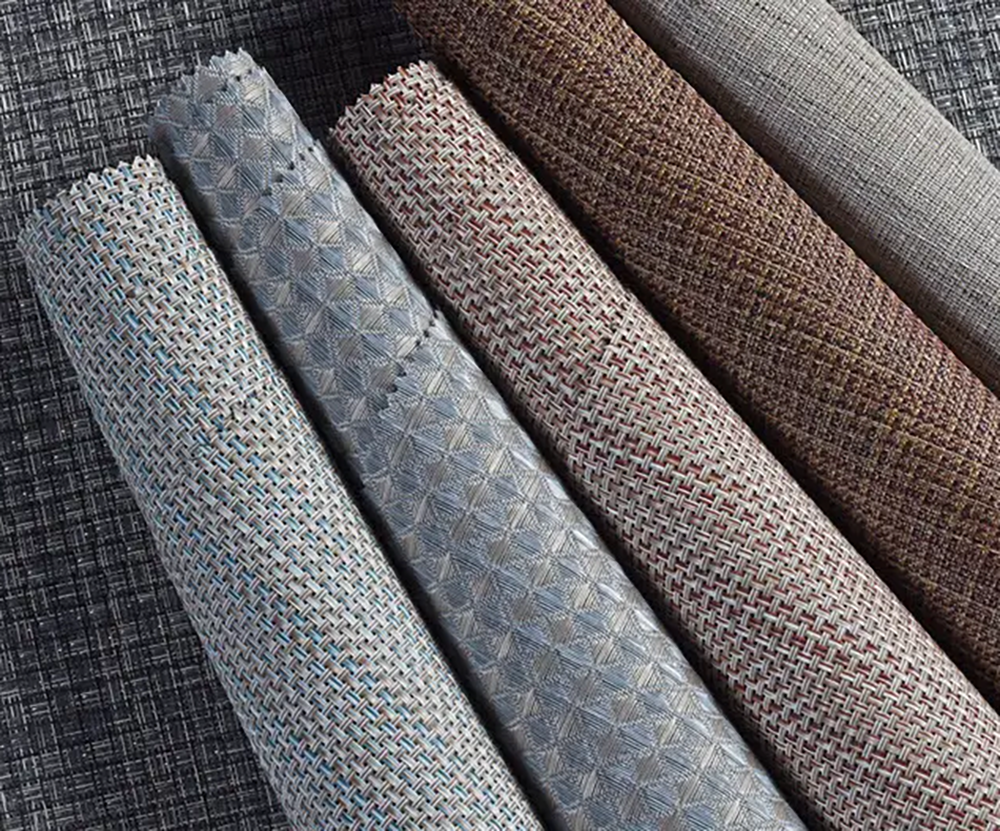
2. Knitted Mesh
Rugged stitching prevents unraveling, stretching, drooping, and ripping on this net-like shade. Knitted mesh sun screen shade cloth, even when densely knitted for optimal UV protection, allows breezes to pass through, making the shaded area more comfortable. Knitted Mesh comprises synthetic materials that keep their shape while being flexible in high temperatures, making it an excellent choice for Texas summers.
Coolaroo’s Shade Cloth
Coolaroo is a knitted mesh fabric made from high-density polyethylene (HDPE), which is UV stabilized (240-280gsm) to protect against the sun’s harmful rays while still allowing air to circulate underneath, keeping the area significantly cooler. Coolaroo fabric has been heating treated to make it colorfast and resistant to rot, mildew, and mold. It keeps its flexibility and strength even when exposed to the sun. Only pre-packaged rolls are available.
3. Vinyl coating Polyester
Polyester is a strong material that is resistant to moisture and corrosion. It’s also possible that it’s more stainless than certain woven materials. This flexible material is sturdy and low maintenance due to its fabric and vinyl combination. All you need to clean your screen in most circumstances is a little soap and water.
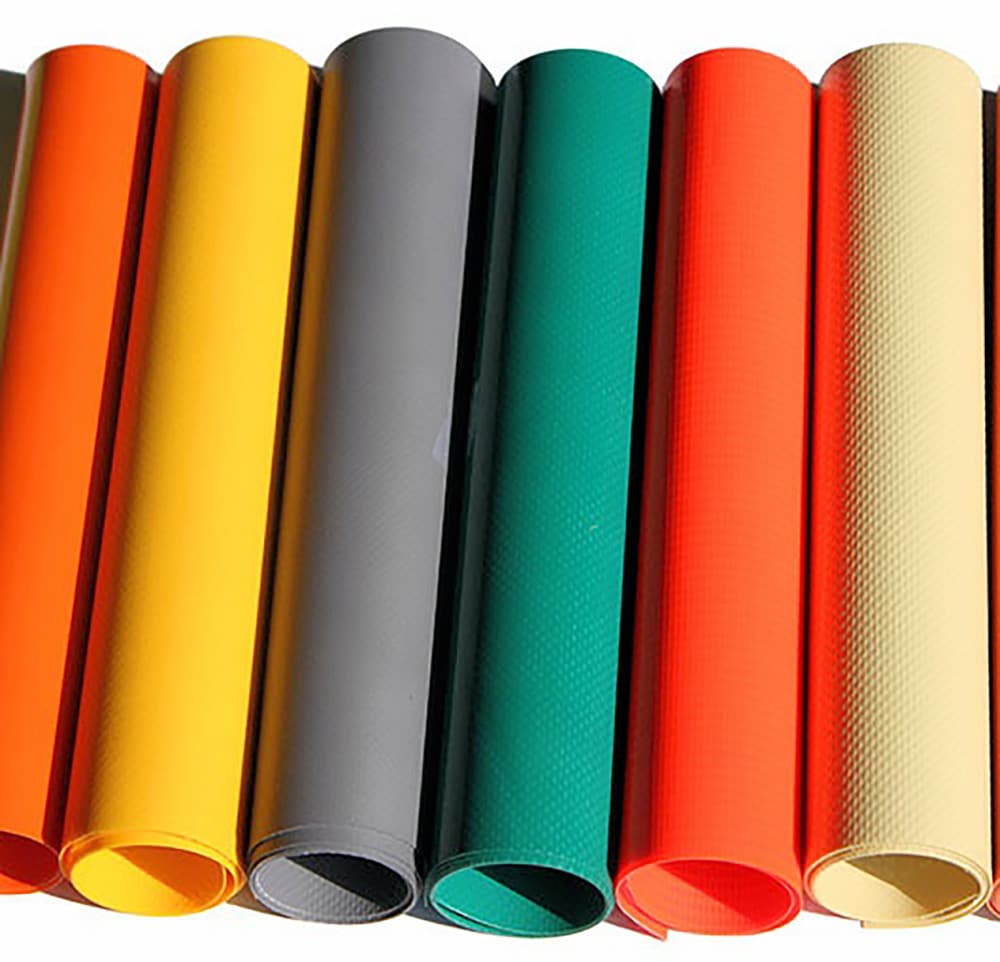
4. Fiberglass
Fiberglass sunshade material has many advantages to polyesters, such as staining, rot, corrosion, and pest resistance. On the other hand, fiberglass is much stronger and has a greater melting point than polyester. Fiberglass may be a fantastic alternative for your sunshade if you’re worried about the Texas heat.
5. Wood
Wooden shutters and various shades are examples of wood shading. It is appealing and can be long-lasting, although termites and other pests may have a bigger impact on wood than synthetic materials. Look for wood that has been treated to withstand decay, mold, and vermin. Consider that wood requires additional upkeep, such as staining regularly, to keep it looking good.
How can the sun shade be used for outdoor projects?
It’s not always about lapping up the rays in outdoor places. It’s sometimes great to unwind in a dark area away from the sun’s rays. Shade can be added to an outdoor space in a variety of ways. A shade screen can be used to build a new standalone structure or to enhance an existing pergola or patio. Fabric or canvas are common materials for such screens. Still, lattice and bamboo are also popular choices that reflect gently diffused light onto the outdoor living space beneath or behind them.
1. Shade Sails
It is easy to create a sail shade as one of the simplest sun blockers. The fabric needs to be triangular-cut with eyelets punched in the corners. Attach the shade to poles, the side of the house, or surrounding trees with sturdy twine or rope.
2. Consider a Tiki Roof
A tiki thatched roof can give your property an island feel. The tropical awning makes you feel like you’re on vacation right outside your back door.
Make a Screen for Your Space
Awnings with motorized retractable awnings can cost hundreds, if not thousands, of dollars. If spending money on this amenity isn’t an option, go with a rolling shade that you can change yourself (like this E&K Sunrise roll-up shade).
3. Construct a Pergola
A traditional pergola provides shade while not fully blocking the sun. The thin wood slates allow the sun’s rays to pass through, allowing you to feel the warmth without being directly exposed to it.
Put Up a Partial Pergola
You don’t have to cover your entire patio because you want some shade in your backyard. This budget-friendly DIY covers an area of the yard or patio and makes a romantic environment for some mood lighting.
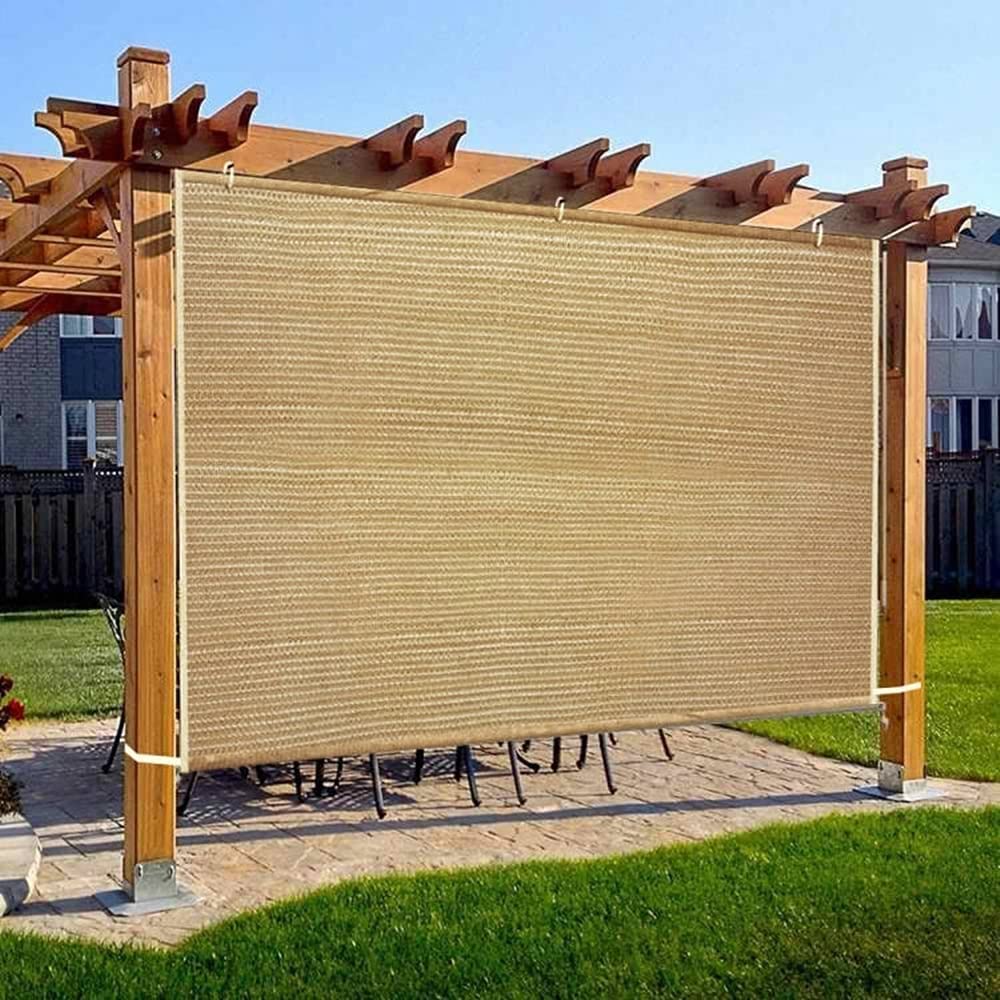
4. Grow a Canopy of Vines
A lattice canopy with lush vines is a lovely addition to any garden. It would be the loveliest garden project. You receive the shade you want with the extra benefit of lush foliage all around you.
Build Outdoor Curtains
Consider adding patio drapes to your pergola to create additional shade than a pergola alone can provide. Everyone wants something simple, economic, and stylish. You might also hang a couple of weatherproof curtains.
Construct a Canopy of Your Design
Construct a quiet haven in your backyard. This easy-to-make canopy awning provides shade from the sun and seclusion from the neighbors. You don’t even need a weekend to construct this outdoor retreat.
Craft a Privacy Screen Without Wood
Homemade This privacy shade was created by Carmona using only copper pipes and connections. The small-space canopy is ideal for anyone with a small yard or deck, and it’s an easy DIY project for beginners.
What is the shade garden project?
A shade garden is cultivated in the shade of a tree or the shadow of a building. Shadow gardens are filled with plants that tolerate shade, stones, and aesthetic elements. You may work with your shade rather than against it with a shade garden.Shade gardens are available in a wide range of designs and sizes. A shade garden can be as basic as a few flowering plants and ground covers near a tree’s base, or it can be more elaborate, with walks, shrubs, and sculptures snaking through a wooded backyard.
There are some steps to creating a shade garden.
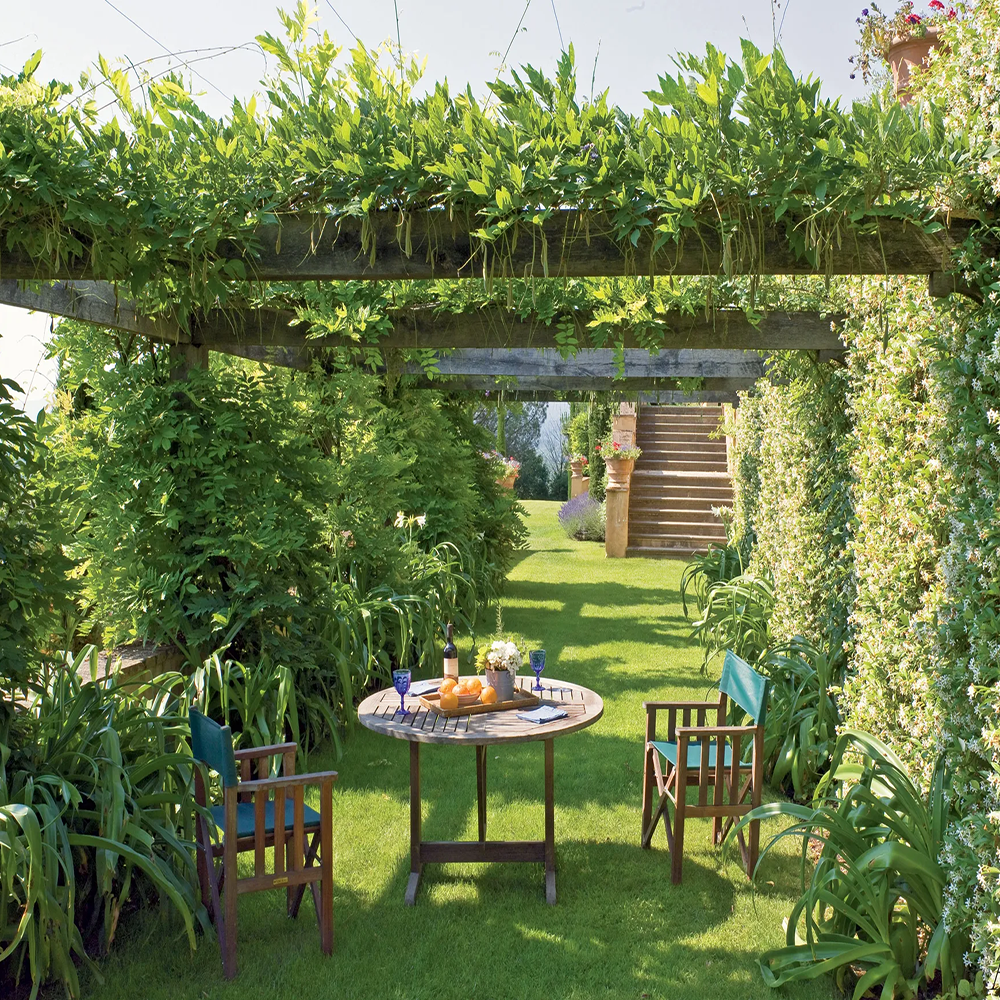
Choose a location for your garden.
If the grass in a shady area of your lawn isn’t growing as well as you’d like, it’s time to consider a shade-friendly garden plan. Shade gardens are typically found at the perimeter of your lawn, behind a canopy of trees, or in the shadows of a building.
Calculate how many plants, rocks, and decorative components you’ll need by measuring the size of your garden.
Make a shade assessment
Take some time to inspect the location before going on a plant shopping spree to see how much shadow it receives during the day. The amount of shade in your garden will influence which plants thrive and which you should avoid.
- Deep shade: Deep shade, also known as dense shade, allows the least sunlight in. Direct sunlight is scarce in densely covered places. Low-branched evergreens such as pines and hemlocks are common places to find them.
- Full shade: Deep shade and complete shade are comparable in sound, although shaded locations receive a little lighter. A wholly shaded area receives less than three hours of sunlight per day.
- Partially veiled: Partial shade, partial sun, and light shade are all interchangeable. In the morning or early afternoon, a partially shaded location receives three to six hours of direct sunlight. Partially covered regions can get intense, brilliant sunlight throughout those three to six hours.
- Filtered or dappled Shade: Dappled shade occurs when sunlight passes through a tree canopy and reaches plants below, resulting in less strong light. There is continual mobility of sun and shade in regions with dappled shade throughout the day. Dappled shade is suitable for most plants that can grow in partial shade. In dappled light, shade-tolerant potted houseplants will thrive.
Consider the planting requirements of your garden.
When selecting plants for your shade garden, keep the following in mind:
- Your planting area’s size: Check the spread of plants at maturity to predict how many will fit in your garden to avoid crowding. After a year in the ground, you don’t want your plants to start pressing up against each other.
- Zone of cold hardiness: Make sure the plants you choose can tolerate the seasonal temperatures in your yard. Native plants are an excellent method to keep your garden from withering in the summer heat or wilting at the first sign of autumn.
Get rid of the grass.
You should eradicate any existing grass in your garden to prevent grass and weeds from sprouting.
- You can dig up your sod with a shovel, but be careful not to damage tree roots by digging shallowly (no more than 6 inches).
- Sheet mulching is another option, which involves laying newspaper over your area and topping it with a thin layer of topsoil. Grass will naturally decay, providing your garden with nutrient-rich organic debris. Just make sure there are no gaps in the newspaper that allow light to pass through.
- To remove moss and surface-level weeds, use a Dutch hoe. Dutch hoes are particularly effective for reaching difficult-to-reach corners with a shovel.
Rake and Till the soil gently.
Dig 4-6 inches deep and turn over your soil with a shovel. Then break up the larger bits of dirt with a manual tiller or cultivator. Tilling allows plants to acquire nutrients and expand their roots by loosening and aerating the soil.
A compost should be added.
After your soil has been tilled, apply a healthy 3-inch layer of compost to your garden space. Spread your compost evenly in the soil with a rake. This nutrient-dense soil will act as the garden bed, providing a healthy start for your new plants in their new home.
Plants should be included.
It’s time for your garden’s brightest stars to shine! This is the most enjoyable part. Sort your plants into groups based on their shadow tolerance, and then try out different designs. Using color contrasts, texture contrasts, and height contrasts can work well.
If two plants look great next to each other, combine them! Just keep in mind their mature width. Grab your trowel and start digging after you’ve set your plants.
Water
Water your shade garden thoroughly just after you’ve planted it. This will help settle the soil and provide a healthy start for your seedlings. You should water every day or every other day for the first week, then two to three times a week.
Finish with edging and decorations.
It’s time to be motivated! After all of your plants are in position, add your various decorations. Let your imagination run wild with patios, artwork, fountains, and fire pits.
What is Commercial Shade Project?
It doesn’t go all about absorbing excess rays whenever it refers to outdoor spaces. It’s sometimes nice to read or simply enjoy your lunch or a cool refreshment in a shady spot away from the hot sun.
Shade is a famous site feature, and it’s essential if you want people to use your parks, play areas, outdoor workout areas, and greenbelts. Commercial shade projects are not only functional and can help you spend much more time outside, but they also add interest to your design and provide your leisure areas with a distinctive look.
Conclusion
Sun Shade cloth can make a significant difference in the health of your family and garden. As a result, several criteria such as fabric material, density %, and color must be considered.
Furthermore, picking the proper shade of cloth isn’t merely a matter of personal taste. You must choose a shade cloth color that is appropriate for your plants, as your choice may impact their growth.
Sun shade fabric and sun sails are versatile methods to remain cool, get out of the heat, or hide from prying eyes, whether at home or on vacation. You can always rely on this breathable fabric to keep your plants cool on hot summer days.
